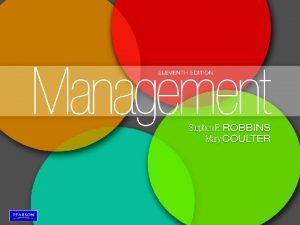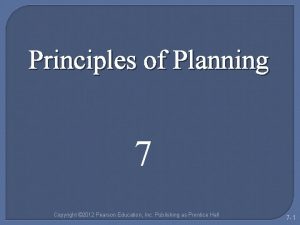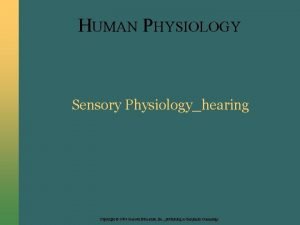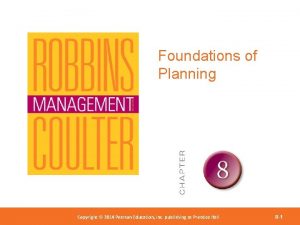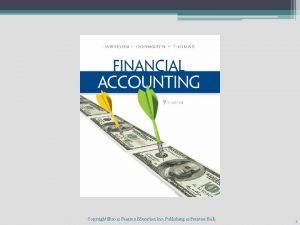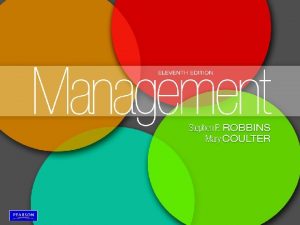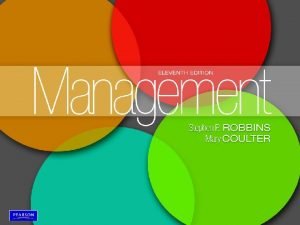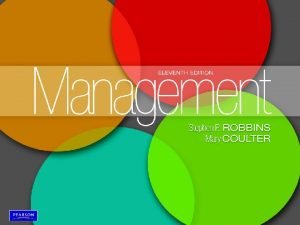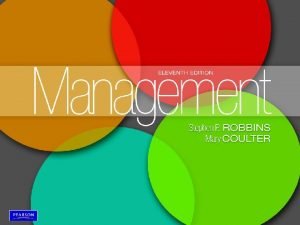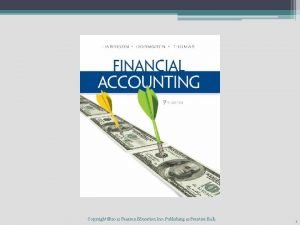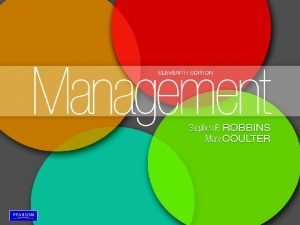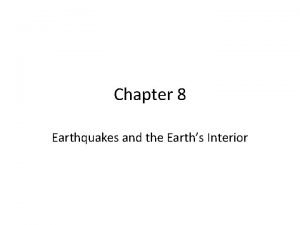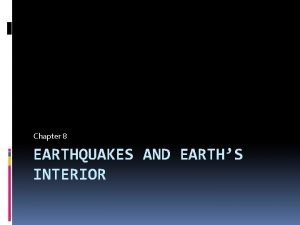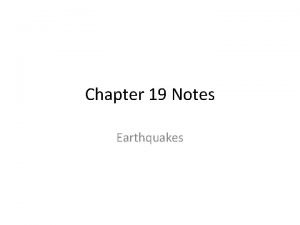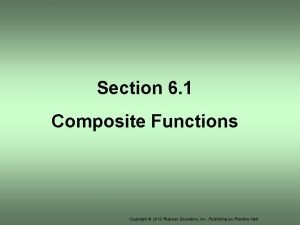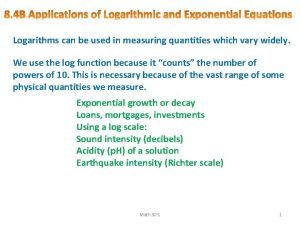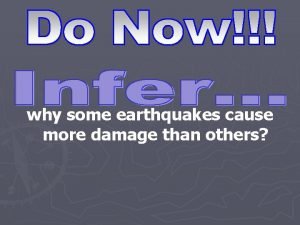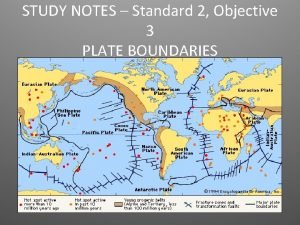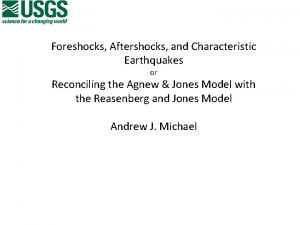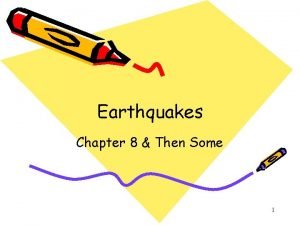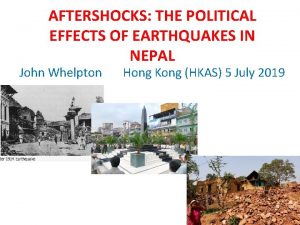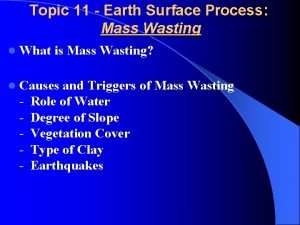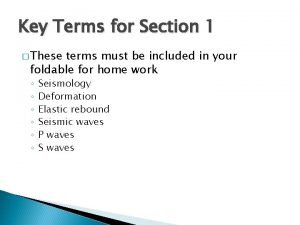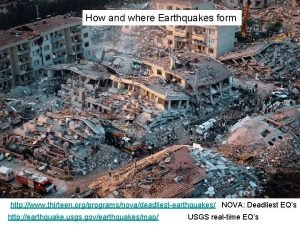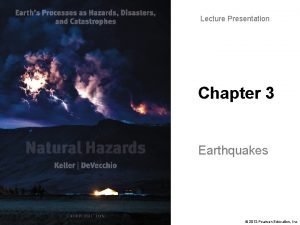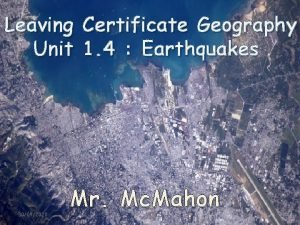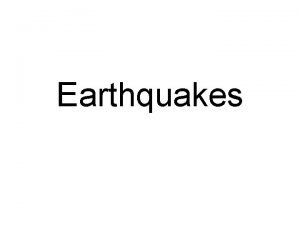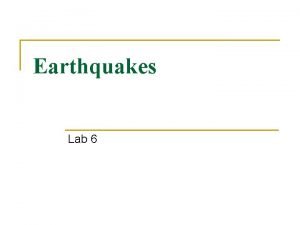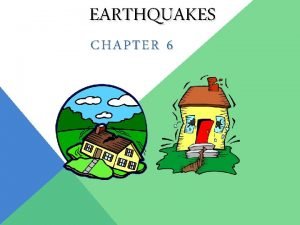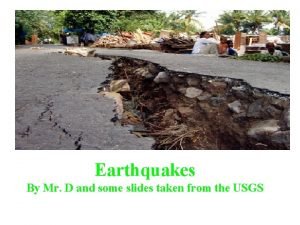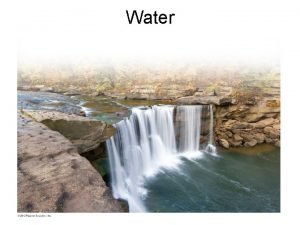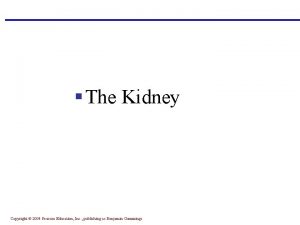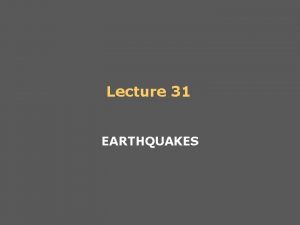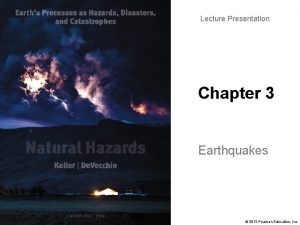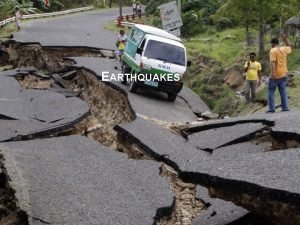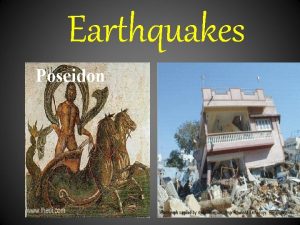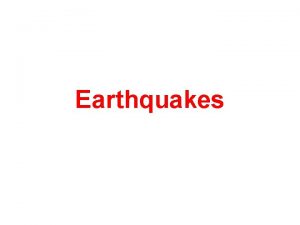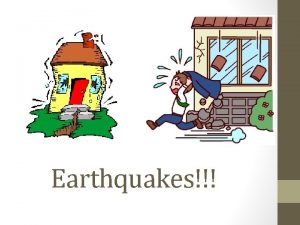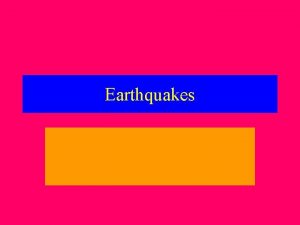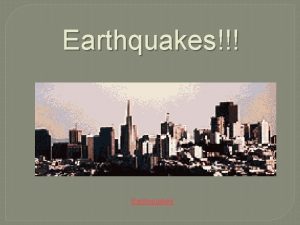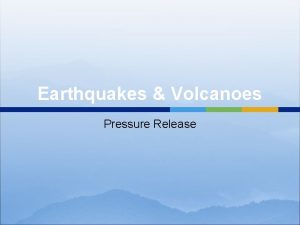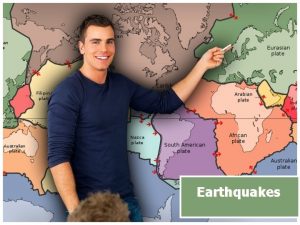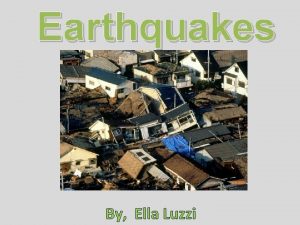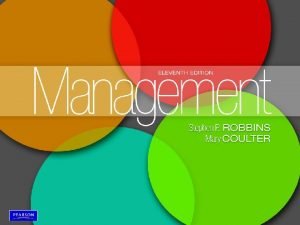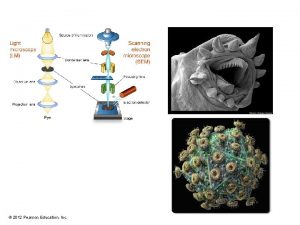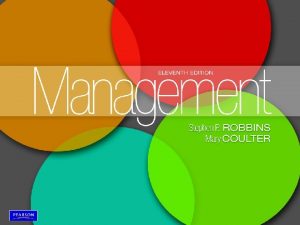Lecture Presentation Chapter 3 Earthquakes 2012 Pearson Education
























































- Slides: 56

Lecture Presentation Chapter 3 Earthquakes © 2012 Pearson Education, Inc.

Learning Objectives § Understand how scientists measure and compare earthquakes § Be familiar with earthquake processes such as faulting, tectonic creep, and the formation of seismic waves § Know which global regions are most at risk for earthquakes and why they are at risk § Know and understand the effects of earthquakes such as shaking, ground rupture, and liquefaction © 2012 Pearson Education, Inc.

Learning Objectives, cont. § Identify how earthquakes are linked to other natural hazards such as landslide, fires, and tsunami § Know the important natural service functions of earthquakes § Know human beings interact with and affect the earthquake hazard § Understand how we can minimize seismic risk, and recognize adjustments we can make to protect ourselves © 2012 Pearson Education, Inc.

Introduction to Earthquakes § There are many earthquakes in any given day § They are compared based on: § Magnitude, the amount of energy released § Intensity, the effects on people and structures © 2012 Pearson Education, Inc.

Table 3. 1 © 2012 Pearson Education, Inc.

Earthquake Magnitude § They are mapped according to epicenter § Focus is directly below the epicenter § Measured by moment magnitude § Determined from area of rupture along, amount of slippage, and the rigidity of the rocks § Richter scale was previously used Figure 3. 2 © 2012 Pearson Education, Inc.

Earthquake Magnitude, cont. § Both scales are logarithmic § Based on powers of 10 § Ground displacement for a magnitude 3 earthquake is 10 times that for a magnitude 2 § Ground motion is measured by seismograph § Related to magnitude, depth, and geologic setting Table 3. 2 © 2012 Pearson Education, Inc.

Table 3. 3 © 2012 Pearson Education, Inc.

Earthquake Intensity § Measured by Modified Mercalli Scale § Qualitative scale (I-XII) based on damage to structures and people’s perceptions § Modified Mercalli Intensity Maps show where the damage is most severe © 2012 Pearson Education, Inc.

Table 3. 4 © 2012 Pearson Education, Inc.

Shake Maps § Shake Maps use seismograph data to show areas of intense shaking Figure 3. 3 © 2012 Pearson Education, Inc.

Earthquake Processes § Earthquakes are distributed along faults § Places where rocks are broken and displaced § All plate boundaries are faults § Movement along faults are slip rates § Measured in mm/yr or m/1000 yr § Sudden rupture of rock produces seismic waves § Release of stored energy © 2012 Pearson Education, Inc.

Figure 3. 5 © 2012 Pearson Education, Inc.

Fault Types—Strike-Slip § Crust moves in horizontal direction Figure 3. 6 a © 2012 Pearson Education, Inc.

Fault Types—Dip-Slip § Vertical movement § Include two walls defined by miners as: § Footwall where miners put their feet § Hanging-wall where they put their lanterns © 2012 Pearson Education, Inc.

Fault Types—Dip-Slip, cont. § Normal fault § Hanging wall moves down relative to footwall § Reverse fault § Hanging wall moves up relative to footwall § If angle is 45° or less it is a thrust fault § Blind faults do not extend to the surface © 2012 Pearson Education, Inc.

Figure 3. 6 b Figure 3. 6 c © 2012 Pearson Education, Inc.

Figure 3. 7 © 2012 Pearson Education, Inc.

Fault Activity § Active fault § Moved during the past 10, 000 years of the Holocene Epoch § Potentially active faults § Moved during the Pleistocene, but not the Holocene Epoch § Inactive § Not moved during the past 2 million years § Paleoseismicity of the fault © 2012 Pearson Education, Inc.

Table 3. 5 © 2012 Pearson Education, Inc.

Tectonic Creep and Slow Earthquakes § Tectonic creep occurs when movement is gradual such that earthquakes are not felt § Can produce slow earthquakes § Also called fault creep § Can slowly damage roads, sidewalks and building foundations § Can last from days to months § Magnitudes can be between M 6 and M 7 © 2012 Pearson Education, Inc.

Seismic Waves—Body Waves § Caused by a release of energy from rupture of a fault § Travel through the body of the Earth § P waves, primary or compressional waves § Move fast with a push/pull motion § Can move through solid, liquid and gas § It is possible to hear them § S waves, secondary or shear waves § Move slower with an up/down motion § Can travel only through solids © 2012 Pearson Education, Inc.

Figure 3. 9 a, b © 2012 Pearson Education, Inc.

Seismic Waves—Surface Waves § Move along Earth’s surface § Travel more slowly than body waves § Move both vertically and horizontally with a rolling motion § Are responsible for most of the damage near epicenter § Love wave—horizontal ground shaking © 2012 Pearson Education, Inc.

Figure 3. 9 c © 2012 Pearson Education, Inc.

Earthquake Shaking § Shaking experience depends on: § Earthquake magnitude § Location in relation to epicenter and direction of rupture § Local soil and rock conditions © 2012 Pearson Education, Inc.

Distance to Epicenter § Both types of body waves are emitted from epicenter of quake § Seismographs record arrivals of waves to station site § Seismogram is the record of the waves § P and S waves travel at different rates and arrive at station at different times § Distance to epicenter can be found by comparing travel times of the waves © 2012 Pearson Education, Inc.

Figure 3. 10 c © 2012 Pearson Education, Inc.

Figure 3. 10 d © 2012 Pearson Education, Inc.

Location of Epicenter § At least three stations are needed to find exact epicenter § Distances from epicenter to each station are used to draw circles representing possible locations § The place where all three circles intersect is the epicenter § Process is called triangulation © 2012 Pearson Education, Inc.

Figure 3. 11 © 2012 Pearson Education, Inc.

Depth of Focus § Depth of earthquake influences the amount of shaking § Focus is the place within the Earth where the earthquake starts § Deeper earthquakes cause less shaking at the surface § Loss of energy is called attenuation © 2012 Pearson Education, Inc.

Figure 3. 12 © 2012 Pearson Education, Inc.

Direction of Rupture § Direction that the rupture moves along the fault influences the shaking § Path of greatest rupture can intensify shaking § Directivity © 2012 Pearson Education, Inc.

Supershear § Occurs when the propagation of rupture is faster than the velocity of shear waves or surface waves produced by the rupture § Can produce shock waves that produce strong ground motion along the fault § May significantly increase the damage from a large earthquake © 2012 Pearson Education, Inc.

Figure 3. 13 © 2012 Pearson Education, Inc.

Local Geologic Conditions § Nature of the ground materials affects the earthquake energy § Different materials respond differently to an earthquake § Depends on their degree of consolidation § Seismic wave move faster through consolidated bedrock § Move slower through unconsolidated sediment § Move slowest through unconsolidated materials with high water content § Material amplification § Energy is transferred to the vertical motion of the surface waves © 2012 Pearson Education, Inc.

Figure 3. 14 © 2012 Pearson Education, Inc.

The Earthquake Cycle § There is a drop in elastic strain after an earthquake and a reaccumulation of strain before the next event § Strain is a deformation § Elastic strain is deformation that is not permanent § Stage 1: Period of inactivity along a segment of fault § Stage 2: Period of small earthquakes where the stress begins to release causing strain § Stage 3: Foreshocks occur prior to a major release of stress § Doesn’t always occur © 2012 Pearson Education, Inc.

The Earthquake Cycle, cont. § Stage 4: Mainshock and aftershocks where the fault releases all pent up stress releases the major quake § Cycle is hypothetical and periods are variable § Stages have been identified for many large earthquakes © 2012 Pearson Education, Inc.

Figure 3. 19 © 2012 Pearson Education, Inc.

Figure 3. 20 © 2012 Pearson Education, Inc.

Plate Boundary Earthquakes § Subduction Zones § Site of the largest earthquakes § Megathrust earthquakes § Example: Cascade Mountains § Convergence between a continental and oceanic plate § Example: Aleutian Islands § Convergence between two oceanic plates § Transform Fault Boundaries § Example: San Andreas Fault in California, Loma Prieta earthquake § Boundary between North American and Pacific plates © 2012 Pearson Education, Inc.

Intraplate Earthquakes § Earthquakes that occur within plates § New Madrid seismic zone § Located near St. Louis, MO § Historic earthquakes similar in magnitude to West Coast quakes § Earthquakes are often smaller than plate boundary quakes § Can be large and cause considerable damage due to lack of preparedness and because they can travel greater distances through stronger continental rocks © 2012 Pearson Education, Inc.

Effects of Earthquakes § Ground rupture § Displacement along the fault causes cracks in surface § Fault scarp § Shaking § Causes damage to buildings, bridges, dams, tunnels, pipelines, etc. § Measured as Ground Acceleration § Buildings may be damaged due to resonance § Matching of vibrational frequencies between ground and building © 2012 Pearson Education, Inc.

Effects of Earthquakes, cont. 1 § Liquefaction § A near-surface layer of water-saturated sand changes rapidly from a solid to a liquid § Causes buildings to “float” in earth § Common in M 5. 5 earthquakes in younger sediments § After shaking stops, ground re-compacts and becomes solid § Elevation changes § Regional uplift and subsidence § Can cause substantial damage on coasts and along streams © 2012 Pearson Education, Inc.

Effects of Earthquakes, cont. 2 § Landslides § Earthquakes are the most common triggers in mountainous areas § Can cause a great loss of human life § Can also block rivers creating “earthquake lakes” § Fires § Displacements cause power and gas lines to break and ignite § Hard to put out because water lines are often broken § Disease § caused by a loss of sanitation and housing, contaminated water supplies, disruption of public health services, and the disturbance of the natural environment © 2012 Pearson Education, Inc.

Natural Service Functions § Water, oil, and natural gas may be rerouted due to faults § New mineral resources may be exposed § Scenic landscapes may form § Future earthquakes may be reduced due to release of energy © 2012 Pearson Education, Inc.

Human Interaction with Earthquakes § Loading Earth’s crust, as in building a dam and reservoir • The weight from water reservoirs may create new faults or lubricate old ones § Injecting liquid waste deep into the ground through disposal wells • Liquid waste disposals deep in the earth can create pressure on faults § Creating underground nuclear explosions • Nuclear explosions can cause the release of stress along existing faults © 2012 Pearson Education, Inc.

Minimizing the Earthquake Hazard § Focus of minimization is on forecasting and warning § National Earthquake Hazard Reduction Program Goals § § Develop an understanding of the earthquake source Determine earthquake potential Predict effects of earthquakes Apply research results © 2012 Pearson Education, Inc.

Estimating Seismic Risk § Hazard maps show earthquake risk § Probability of a particular event or the amount of shaking Figure 3. 29 © 2012 Pearson Education, Inc.

Short-Term Prediction § Pattern and frequency of earthquakes § Foreshocks § Deformation of ground surface § Changes in land elevation § Seismic gaps along faults § Areas that have not seen recent quakes § Geophysical and Geochemical changes § Changes in Earth’s magnetic field, groundwater levels. © 2012 Pearson Education, Inc.

Earthquake Warnings § Plan for issuing a prediction or warning § Earthquake warning systems Figure 3. 31 © 2012 Pearson Education, Inc.

Community Preparations for Earthquake Hazard § Critical facilities must be located in earthquake safe locations § Requires detailed maps of ground response § Buildings must be designed to withstand vibrations § Retrofitting old buildings may be necessary § People must be prepared through education § Insurance must be made available © 2012 Pearson Education, Inc.

Personal Reactions and Preparation § Do a home inspection to make sure that your home is structurally sound § Secure large objects § Make a personal plan of how to react to a quake § Leave buildings AFTER shaking stops § Turn off main gas line § Move to an open area © 2012 Pearson Education, Inc.

End Earthquakes Chapter 3 © 2012 Pearson Education, Inc.
 2012 pearson education inc
2012 pearson education inc 2012 pearson education inc
2012 pearson education inc 2012 pearson education inc
2012 pearson education inc 2012 pearson education inc
2012 pearson education inc Cranial cephalic
Cranial cephalic Pearson education inc. 2012
Pearson education inc. 2012 Pearson education inc. 2012
Pearson education inc. 2012 2012 pearson education inc anatomy and physiology
2012 pearson education inc anatomy and physiology 2012 pearson education inc
2012 pearson education inc 2012 pearson education inc
2012 pearson education inc Pearson education 2012
Pearson education 2012 2012 pearson education inc
2012 pearson education inc Pearson education 2012
Pearson education 2012 Pearson education inc. 2012
Pearson education inc. 2012 2012 pearson education inc
2012 pearson education inc 2012 pearson education inc
2012 pearson education inc 2012 pearson education inc
2012 pearson education inc Pearson 2012
Pearson 2012 2012 pearson education inc
2012 pearson education inc Pearson education, inc. publishing as prentice hall
Pearson education, inc. publishing as prentice hall Pearson education 2011
Pearson education 2011 Pearson education inc publishing as pearson prentice hall
Pearson education inc publishing as pearson prentice hall Pearson education inc publishing as pearson prentice hall
Pearson education inc publishing as pearson prentice hall Chapter 8 section 2 earthquake measurement answer key
Chapter 8 section 2 earthquake measurement answer key Chapter 8 earthquakes and volcanoes
Chapter 8 earthquakes and volcanoes Chapter 8 earthquakes and earth's interior
Chapter 8 earthquakes and earth's interior Chapter 19 earthquakes
Chapter 19 earthquakes Chapter 8 earthquakes and earth's interior
Chapter 8 earthquakes and earth's interior Chapter 19 earthquakes
Chapter 19 earthquakes 01:640:244 lecture notes - lecture 15: plat, idah, farad
01:640:244 lecture notes - lecture 15: plat, idah, farad Pearson 2012
Pearson 2012 Robert whelan
Robert whelan Stress management for life 5th edition
Stress management for life 5th edition In what section of earth do earthquakes happen
In what section of earth do earthquakes happen Btn earthquakes
Btn earthquakes Explain natural disaster
Explain natural disaster Http://earthquake.usgs.gov/earthquakes/map/
Http://earthquake.usgs.gov/earthquakes/map/ A large crack in the earth formed by a river or earthquakes
A large crack in the earth formed by a river or earthquakes Why some earthquakes cause more damage than others
Why some earthquakes cause more damage than others Frequent earthquakes in an area may indicate
Frequent earthquakes in an area may indicate Earthquakes
Earthquakes Quiz 1 earthquakes
Quiz 1 earthquakes Earthquakes
Earthquakes Mass wasting processes
Mass wasting processes Elastic rebound theory
Elastic rebound theory Why do earthquakes occur
Why do earthquakes occur Two types of body waves
Two types of body waves Pearson
Pearson Richter scale
Richter scale The point on the ground directly above the focus
The point on the ground directly above the focus Diastrophism
Diastrophism Causes of earthquake in points
Causes of earthquake in points Liquefaction occurs when seismic waves cause __________.
Liquefaction occurs when seismic waves cause __________. Types of faults
Types of faults Lecture presentation software
Lecture presentation software Water cycle pearson education
Water cycle pearson education Renal tubule
Renal tubule



